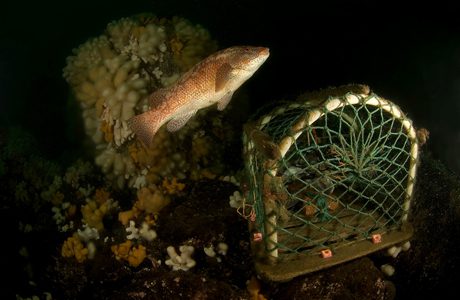
Environmental advocacy group Oceana has just completed (in early August) the UK leg of its eight-week North Sea expedition, and the preliminary results seemingly emphasise the wealth of marine biodiversity present in this region. To date, the expedition has covered over 400 nautical miles – mostly in British waters – and has already identified and documented over 350 species, by means of a remotely operated vehicle (ROV), professional SCUBA divers, and invertebrate samples taken from the seafloor.
“The UK waters of the North Sea are home to an impressive variety of marine species and habitats, which are subject to a wide array of serious and ongoing threats, including overfishing, pollution, and intensive offshore development,” explains Lasse Gustavsson, Executive Director of Oceana in Europe. “Oceana’s surveys highlight the clear need for the UK to implement stronger protection of its important marine areas. Brexit creates an opportunity for the government to improve the protection of British waters by designating new areas for protection, and ensuring that all marine protected areas are well-managed.”
The most documented species so far are those commonly found in soft-bottom sea beds, some of which carry a high commercial and ecological value. The majority of fish have been flatfish, especially dab, scaldfish, plaice, flounder, sole and bottom dwellers such as weevers, dragonets, sandeels and rays. A remarkable variety of crustaceans have also been documented, including Norwegian and European lobster and edible crab, as well as gardens of abundant soft corals, such as dead man’s fingers, and dense aggregations of sea pens on soft bottoms down to 200 m depth.
Since its launch in July in the Netherlands, Oceana’s North Sea Expedition has conducted surveys in more than 70 sites within six large areas, some of which were previously little explored. Survey areas were selected in consultation with local authorities, scientists, and NGOs in each of the four countries being surveyed, including the Marine Conservation Society in the UK. Oceana’s surveys in UK waters have covered biologically important inshore areas to the north of the Humber estuary and off the Norfolk coast, and offshore areas (Brown Bank, Cleaver Bank, Devil’s Hole, and a transboundary area in the centre of the North Sea that spans British, Norwegian, Danish, and Dutch waters).
Some of these areas are important fishing grounds for the UK and other European countries. In addition to surveying marine species and habitats, Oceana has documented scars on the seabed from bottom trawling, which threatens the survival of important sessile animals such as soft corals and annelids in this sensitive environment.
By gathering new evidence to document the biological importance of sites, this research will form the basis of new proposals to establish or enlarge marine protected areas (MPAs) and strengthen their management. Oceana’s ultimate aim is to promote the establishment of a coherent network of North Sea MPAs that will both preserve biodiversity and help to restore depleted fish stocks.
The Oceana research team is continuing the North Sea expedition onboard the MV Neptune, with surveys in Norwegian, Danish, and Dutch waters. The project has been generously funded by the Dutch Postcode Lottery.






